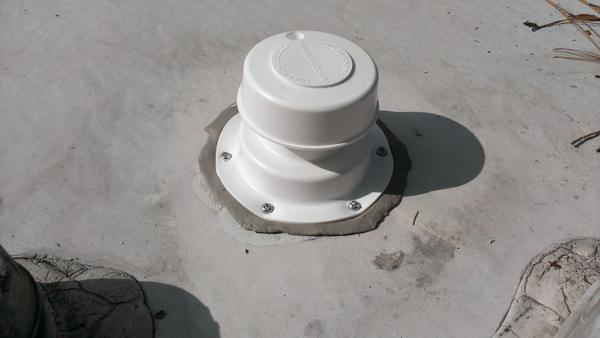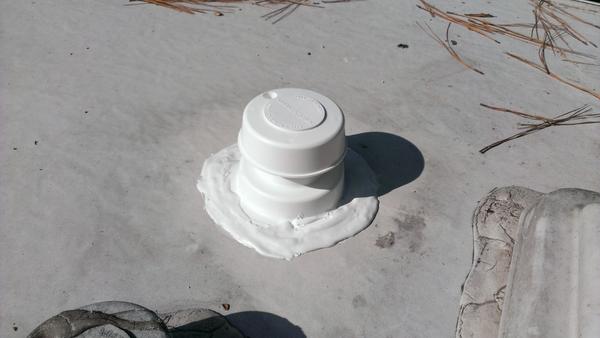Now that you are in the habit of inspecting the roof of your RV at least once every 2 months, what should you do if you find a seam that you think is questionable?
You should be looking carefully around hatches, fittings, antennas and anything else mounted to your roof. Look closely for any signs that the caulking is separating, or is cracked. Remember the roof like everything else in your RV, it is in a constant earthquake as it goes down the road. No matter how good the caulking or how new the RV is, cracking and separation will happen. The goal is to catch it early before water can leak in and cause major damage.
It goes without saying that before you began your inspection that you cleaned your roof of any dirt or foreign matter so you can get a good look. If you find an area of concern ask yourself, could water find its way through this small crack or separation?
If the caulking that is split, or cracked or separated looks supple and not dried out, then you can clean just the area of the crack or separation carefully by using a puddy knife and and small stiff brush. Remove any caulking that appears to be dried out, better safe than sorry.
In my 18+ years of full time RVing, I have tried many different caulking. Mainly i experimented in my early years cause I didn’t know any better. For years now, the only caulking I will use on any RV is Dicor.
The company makes several products, even a complete coating for rubber roofs. This post is addressing maintenance, however so there two products we recommend . The first is Dicor Self Leveling Lap Sealant.
The “self leveling” part means that you would use it primarily on horizontal surfaces, like the roof. When you put it on, its almost like magic as in an hour or two, it forms this pretty smooth puddle on what ever you coated it with. Even if after you are done with the application it looks kind of rough, the sealant will level itself and look much better.
The second product is Dicor Non leveling Lap Sealant which you would use more on vertical surfaces like the seam around a door. This product pretty much doesn’t move after application.
I want to warn you of a couple of things about using either Dicor product. It gets on EVERYTHING. It is not easy to work with as it sticks to anything and is very difficult to remove. It seems to have a mind of its own and “travels”. In fact:
- wear old clothes
- wear old shoes
- use paper towels to clean things not rags. When you wipe off Dicor off something with a paper towel, throw the towel away.
- wear gloves, old ones you dont care about, rubber disposable gloves are best
- some people say to smooth seams with a wet finger. I have NEVER had good luck with this.
- I just apply it carefully, put plenty on and then let it do its thing(we are talking about the roof now)
- it is difficult to reuse the tube of Dicor on another application at a later date. It is almost impossible to seal the tube. I have found a big screw, screwed into the end of the tube works best. Any air that gets into the tube will render the remaining sealant useless.
- Dicor takes at least a day or two to cure. Stay away from it until it is totally dry!

A sewer fitting before Dicor Self Leveling Lap Sealant
I highly recommend this product. For the full timer, in my opinion it does not make any sense to try anything else. People ask can I use the product “where the guys coats his rowboat?,” The answer is NO. lol…
The Dicor comes in a couple of colors, white, black and gray. It works fine on all rubber and fiberglass roofs.
This one is the self leveling product for the roof.
This one is the non leveling, non sag product mainly for vertical surfaces.
